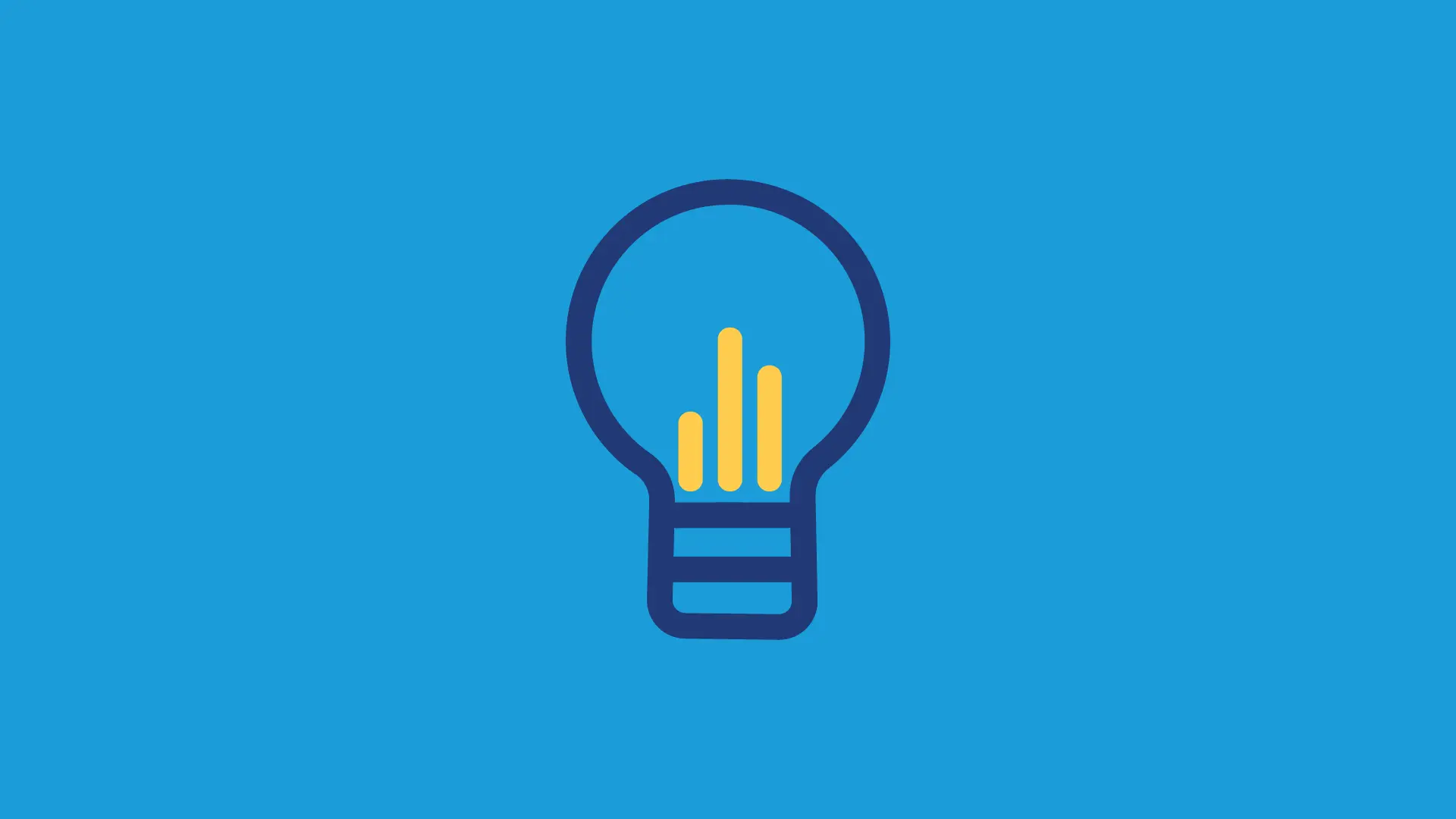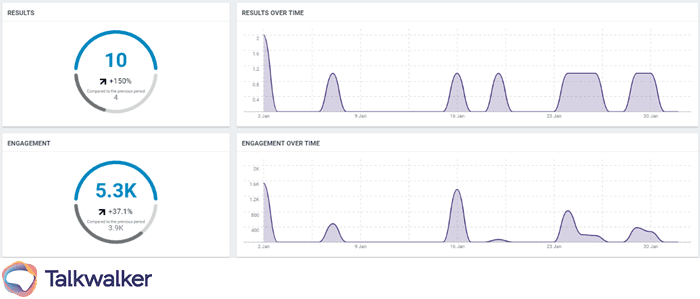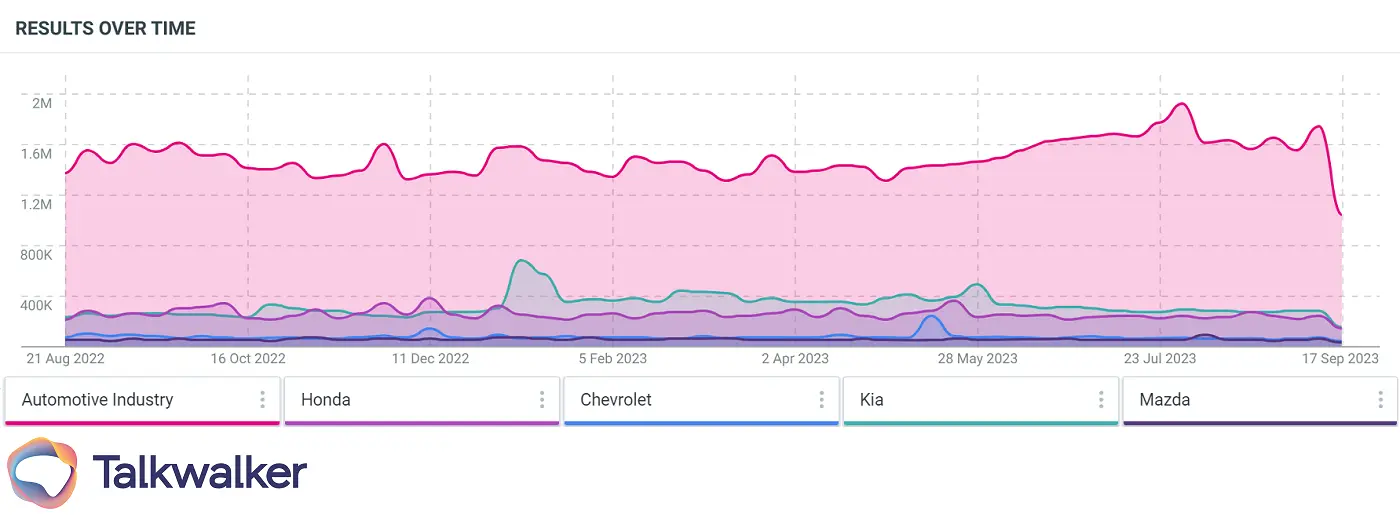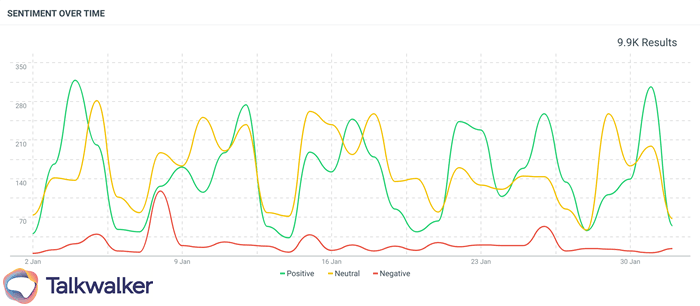Mastering Social Listening: Tips and Techniques
We've gathered global experts to provide their favorite social listening tips and tricks, to get more from your strategy.
February 22, 2024

How do you get the most out of Social Listening? We’ve gathered experienced people from across the globe to provide their favorite social listening tips, to inspire your next project.
Use the right social listening setup
To get the most from social listening, you need to know exactly what you want to achieve.
“Social listening requires careful goal-setting before starting. This crucial phase guides the complete journey into the huge world of digital discussions through personal experience. Success begins with a deep awareness of what one seeks to learn, whether it's customer sentiment, industry trends, or brand surveillance in the ever-expanding internet realm.
This underlying process becomes more important when memories and insights intertwine. I've discovered that social media's uncertainty is exacerbated by a lack of clear goals. A social listening strategy without goals risks drifting through an ocean of data like a ship without a destination.
Each digital connection has the ability to generate a wealth of information, echoing personal initiatives. From identifying client sentiments in the digital tapestry to collecting industry trends, the objectives govern meaning extraction from online discourse. This seamless synchronization between goal and action transforms social listening from a data-gathering activity to a purposeful voyage that unfolds insights, enabling precise digital current navigation.”
Draven McConville, CEO & Founder, Klipboard
“First, establish a framework for social listening. I've learned this the hard way. When doing social listening, you're dealing with loads of data, so having a framework helps you manage monitoring and reporting effectively. There's a ton of noise on social media, so start by defining your objective and outlining the steps to achieve it.
I like to sketch my process on paper, making adjustments as needed before visualizing it in a more formal presentation for our clients. After establishing this process, it was crucial for me to explain the framework to the brand to help them understand how we were going to measure earned media.
This often involves educating and clarifying, and sometimes revising the framework until it's easily understood. So, I suggest honing your communication and presentation skills to effectively convey your framework, ensuring it's clear to those receiving the information. This approach helps in making the brand comprehend the social listening strategy better.”
Victor Karpenko, CEO and Founder, SeoProfy
Fresh takes on using social listening
Social listening covers multiple use cases. This section covers alternate ways to deliver the best strategy.
Connect with your audience
“Many prospects today are socially sharing so much information about their needs/wants/pain points on their public profiles so with a little research PR/marketing messages can be personalized/relevant/helpful rather than intrusive/cold from your initial outreach which leads to more meaningful ongoing engagement.”
Paige Arnof-Fenn, Founder & CEO, Mavens & Moguls
“One valuable tip in social listening is to prioritize engagement over volume. Instead of solely focusing on the quantity of mentions or conversations, pay attention to the quality of interactions and sentiment. Engage regularly with your audience to build those relationships and gain deeper insights into what they want and value. Quality interactions often yield richer insights and can lead to stronger connections with your audience.”
Dan Kroytor, Founder,

“Too often, brands use social listening to find negative mentions and put out fires. But there is so much more you can gain by listening to consumers authentically. Approach it from a place of curiosity rather than defensiveness.
Seek to understand their mindsets, values, pain points and emotions. Reflect on what motivates their feelings towards your brand, both good and bad.
This level of empathetic listening uncovers powerful consumer insights you would have otherwise missed. It builds trust and loyalty when you can demonstrate you hear your audience and make changes based on what they need. Plus, it prevents misunderstandings from escalating into full-blown crises.
So take time to not just monitor conversations, but truly listen and learn from them. You'll be amazed at how social listening can strengthen your brand when you use it to walk in your customers' shoes.”
Gauri Manglik, CEO and Co-Founder, Instrumentl
Keep one eye on the competition
“It’s good to know what the market is saying about your product or service, but it’s even better to know what they’re saying about your competitors. Monitor how they position themselves in the market, their mentions, content strategy, and what their customers have to say about them. Then use these insights to get steps ahead of them in those aspects.
This is a great way to benchmark yourself against the competition and analyze what consumers like or don’t like about them, so you can take note and make necessary adjustments in your approach and your offerings as well.”
Baidhurya Mani, Founder, SellCoursesOnline
“Specifically, my top tip is to focus monitoring on uncovering buyer pain points and unmet needs. Rather than vanity metrics, analyze conversations to identify recurring consumer frustrations and problems lacking adequate solutions. This reveals untapped market opportunities to address.
For example, by tracking social discussions around competing brands, we gained insight that customers were continually running into issues with onboarding and setup. Our competitor's products were too complex. We capitalized on this insight to redesign our onboarding experience for simplicity and saw conversion rates jump 15%.”
Alex Adekola, CEO & Founder,

Don’t just listen, engage
“Optimize social listening by joining conversations actively rather than just observing. Share insights with your audience, address their concerns, and ask thought-provoking queries to connect authentically. Doing so strengthens your brand's online presence and creates a genuine relationship with your audience.
Ignoring comments and questions can lead to a perception of indifference. This can result in missed opportunities to attend to urgent issues promptly and showcase your brand personality. Moreover, without active participation, you risk being overshadowed by competitors who prioritize building relationships through genuine dialogue.”
Riva Jeane May Caburog, PR/Media Coordinator, Nadrich & Cohen
“In my experience, one social listening tip that I highly recommend is to actively engage with your audience. Social media platforms provide a unique opportunity to connect and interact with your target audience in real time. By actively engaging with your audience, you not only demonstrate that you value their opinions and feedback, but you also gain invaluable insights into their needs, preferences, and pain points.
Engagement can take various forms, such as responding to comments, messages, and mentions, participating in relevant conversations, and even initiating discussions or polls. By being present and responsive on social media, you can foster a sense of community and build stronger relationships with your audience.
Moreover, engaging with your audience allows you to gather firsthand information about their experiences, opinions, and suggestions. This valuable feedback can then be used to tailor your products, services, and marketing strategies to better meet their needs and expectations.”
Dave Kerr, Advertising Specialist, Merged Dental Marketing
“Don’t just listen, engage! Social listening is not a one-way road. Actively share your thoughts on positive mentions, address concerns, and participate in relevant conversations. It shows your audience you are listening, and you will build brand credibility and advocacy.”
Sarrah Pitaliya, VP of Marketing, Radixweb
Turn your audience into a community
“My favorite trick is partnering with micro-influencers in each software niche as review co-contributors. These niche luminaries attract engaged audiences perfect for polling feature preferences.
We simply ask followers what frustrations our influencer co-author should investigate when test-driving platforms. Hundreds of responses highlight precise user dilemmas. We then directly spotlight those consumer-validated concerns in reviews.”
Robert Brandl, Founder/CEO, Email Tool Tester
“One of my favorite approaches is to spotlight and share user-generated content featuring their pets. When our followers tag us in their pet’s photos, share stories, or leave comments, we not only engage with them but often feature their content on our platforms. This encourages more interaction and creates a community feeling, showing we value their contributions and listen to their voices.
I've also found it incredibly beneficial to monitor niche hashtags related to pet care, health tips, and breed-specific advice. This focused approach allows us to gather insights into very specific areas of interest within the pet owner community, helping us to tailor our content, services, and products more effectively.
At PetMeTwice, we use social listening as a direct line to customer feedback, taking note of suggestions, praises, and concerns voiced online. By implementing changes based on this feedback and communicating these adaptations back to our audience, we close the feedback loop. This practice not only improves our services but also demonstrates our commitment to our customers' satisfaction.”
Dr. Mollie Newton, Founder, PetMeTwice
Create products consumers love
“For a social listening hack that packs a punch, focus on gathering product development insights from customer discussions. Keep an eye on what people say and pay attention to their recurring feedback and needs. This helps refine your existing products and sparks ideas for new ones too.
At Wainbee, we're in the mix of online chatter about our industry, learning from customer experiences and expectations. If we notice a rising demand for more efficient filtration or stumble upon challenges in motion control applications, we take those insights straight into our product development. This gives us a direct channel to what our customers want and need and guides us to create solutions that truly hit the mark.”
Campbell Tourgis, Executive VP & Chief Operating Officer, Wainbee
“Reader Preferences and Trends: We can gain valuable insights into the books that readers are interested in and discussing by analyzing social media platforms and online forums. This information helps us to curate our selections more effectively, tailoring our inventory to meet the demand of readers. Additionally, it helps us to develop targeted marketing campaigns that resonate with current reader interests and trends. By taking a proactive approach, we can enhance our relevance, drive reader engagement, and increase sales.”
Rosie Langello, Founder, Book Vibe
An extra SEO win
“Social listening can also be a great way to boost your SEO. If you use social listening tools to monitor unlinked mentions of your brand you can then reach out to whoever has mentioned you and ask if they can add a link to their post. You won’t always get a response, but in can be a great way of easily building backlinks to increase your online authority and visibility.”
James Taylor, SEO Strategist, Embryo
Keep ahead of trends
"We use social listening for research purposes.
Best social listening tools now can show you the exact sentiment a specific audience has about some concept or keyword across time. It's so simple to use it to your advantage in crafting interesting and eye-catching research that you can use for building your thought leadership persona, networking or gaining media exposure.
You can also use this research for digital marketing campaigns. At Chilli Fruit we have put in time and effort several times to share valuable insights about industry trends with our professional environment.
It's also the best feedback tool you can get. Learn from the past to create better results for the future. There are clear and noticeable trends in people's opinions and behaviours, so why not take a look at how they work?"
Milosz Krasinski, Managing Director, Chilli Fruit Web Consulting
Take your social listening further
These next tips are about pushing your capabilities further to optimize and accelerate results.
Don’t forget barnd brand misspellings
“The technique of including variants and common misspellings changed the game, like unlocking hidden doors in social media conversations. This strategy made my social listening tools active participants in a global internet debate. These adjustments bridged a wider audience and created a more inclusive dataset that captured online discourse's variety.”
Julian Patrick, CEO, Stovefitter's Warehouse
Put your insights to action
“…have a process in place for what you do with the data you're alerted to. When set up correctly, social listening tools are amazingly efficient at uncovering trends, consumer insights and brand sentiment, yet all this data is meaningless if a business doesn't have a plan to take action based on the information gathered.
Whether that's responding to the comments made by customers on social media, or creating new content based on the trending topics within your industry, using the data in a meaningful way is vital if you're going to go to the effort of social listening.”
Guy Sharp, Relocation Manager, Andorra Guides
Monitor your brand sentiment to find the good and bad
“Don’t forget to pay close attention to the sentiment behind your brand mentions. You can combine your social listening software with a sentiment analysis program to really make the most of it all. Tracking mentions only by keyword isn’t enough; you need to find the meaning behind how people feel about your brand or industry.
Look for patterns in positive and negative sentiment to identify areas for improvement or capitalize on your strengths. This data can guide your marketing strategies and help you better connect with your audience.”
Stefan Chekanov, CEO,

“My top tip is to filter out the noise to make the most of social listening. Use smart filters to sort through social media conversations and focus on what really matters. By narrowing down keywords, sentiments, or specific demographics, you can identify useful insights without getting lost in irrelevant information.
Without effective filtering, you'll likely get misleading results that can lead to flawed business decisions. Misinterpreting the data might make you miss out on real customer sentiments and important trends. Plus, dealing with a flood of irrelevant information can slow down the whole process, making it harder to spot the insights that truly matter.”
Lilia Tovbin, CEO & Founder, BigMailer.io
Understand cultural and global differences
“Take the time to understand the cultural and geographic quirks revealed through social listening. Knowing this data is the secret sauce to tailoring your strategies for a more impactful connection with your audience. When you conform to regional preferences, language nuances, and cultural sensitivities, your content becomes more relevant and engaging.
For instance, in our business, social listening clues us in on how different regions perceive and enjoy playing pickleball. Because we have the proper knowledge, we can easily tweak our marketing and engagement efforts to maximize our impact. This results in the pickleball community feeling a deeper connection with our brand. We've also seen higher engagement, better conversion rates, and increased brand loyalty, all while celebrating the diverse experiences of pickleball enthusiasts around the globe.”
Peter Hoopis, President/Owner, Hoopis Pickleball
“You can know the best places to implement a social listening strategy, but if you do not understand what your audience is saying it will do little good, which is why it is important to learn their language. Various target audiences have a language all their own, as the way they present ideas and concepts, as well as the words they use to describe them can be highly specific, and being able to follow their train of thought is critical.
Learning how they phrase concepts, what keywords and secondary keywords hold meaning, and understanding their sentence structure, will allow you to not only fully comprehend their pain-points and desires, but how you can communicate back to them. It is making a concerted effort to learn not only where your audience is talking but the language they use in their communication that will make your social listening skills effective and productive.”
Christy Pyrz, Chief Marketing Officer, Paradigm Peptides
Consider the bigger picture
“One of the most important social listening tips I recommend is to take the time to understand the context around conversations. It's so easy to dive into keyword tracking and sentiment analysis without taking a step back to understand the full picture of what people are actually discussing.
By spending time reading through entire conversations, not just isolated posts, you gain crucial qualitative insight into the experiences people are having, the emotions they're expressing, and the true nature of the dialogue. This allows you to derive deeper meaning from the data and numbers - and determine how your brand can add value to the conversation.
Rather than just monitoring metrics, I've found this level of active listening and learning to be invaluable. It enables me to provide strategic recommendations tailored to my client's brand values and audience needs - guidance that quantifiable data alone can't always capture.”
David Miles, Founder and CEO, The PPC Machine
Combine your social listening with consumer data
“To conduct a comprehensive market analysis, it is important to integrate social listening insights with other data sources. This will provide a more complete understanding of consumer behavior and market trends. In addition, it's advisable to pay attention to both mainstream and niche financial platforms to gather a diverse range of insights. This will help to ensure that all relevant information is considered and can lead to more informed decision-making.”
Bert Hofhuis, Founder of Every Investor
Don’t forget memes as data source
“One uncommon yet effective tip would be to monitor trending memes and viral content related to your industry. Memes have become a prevalent form of communication on social media platforms, often reflecting popular culture and consumer sentiment in a humorous manner. By tracking and understanding these memes through social listening tools, businesses can identify emerging trends and leverage them in their marketing strategies or product development.
This unique approach not only allows companies to stay relevant and connect with younger audiences but also demonstrates an understanding of popular online culture, fostering a relatable brand image. Keeping an eye on evolving memes is just one creative way to utilize social listening for business growth amidst the ever-changing digital landscape.”
Michael Alexis, CEO of teambuilding.com
Get the most from your social listening provider
“Get in touch with the customer support team, no matter what tool you're using.
Social media monitoring/listening tools can be overwhelming, even if you're already familiar with them. Get in touch with someone who breathes them and can configure it for you at first, so instead of spending time on it yourself, you can get familiar with the platform.
We've done it one year before one of the marketing Expos we ran in Europe. We did sign up, paid, but had no idea how to "make ends meet". Customer support reps helped us so we could focus on running the Expo and making an impact, and everything was measured correctly in the background.”
Kinga Edwards, CEO, Brainy Bees
Focus on strategies that drive results
“First, go beyond vanity metrics. Tracking mentions and hashtag volumes doesn't directly translate to business impact. Instead, focus on how social data directly ties to core business objectives like leads generated, sales influenced, customer support cases preempted, brand awareness lift etc. Establish the hard ROI.
Second, expand the listening lens beyond owned channels. Derive insights from public consumer conversations on review sites, forums, Twitter, blogs etc. This is where you uncover product and brand perceptions, cohorts to target, opportunities etc. Mine for consumer gold!
Third, get stakeholders involved early and often. Collaboration across marketing, customer support, product teams enriches insights further. Collective brains are better than one! Operationalize findings through better customer targeting, new product features, improved services.
Additionally, supplement listening approaches with strategic social engagements. Respond to mentions and DMs, foster community relationships, crowdsource ideas - this nurtures brand relationships and continually grows the listening dataset.”
Sean Spittle, Managing Partner, InspectNTrack
Track trends over time
“Another tip is to track the evolution of related topics and keywords over time. This strategy helps us identify emerging trends and shifts in consumer interests or concerns within the security field. It's not just about what they say; it's also about how the discussion develops and changes. We can remain ahead of the curve by modifying our tactics and products to satisfy changing needs thanks to this foresight.”
Eugene Klimaszewski, President, Mammoth Security
Tell a story with your social data
“My favorite trick? Using social listening for storytelling. I know it's not your typical use, but hear me out.
Social media is a tapestry of stories and experiences. Through social listening, I gather these narratives, understanding the emotions and desires behind them. This is a rich, qualitative insight into what makes our audience tick. It's very very helpful in marketing strategizing.
Especially when we're running a new client, that's just entering the market.
I then weave these insights into our marketing narratives. Content must resonate on a deeper level with whoever sees it. This method turns our campaigns into reflections of our audience's real-life experiences and aspirations. Marketing now is really just creating a connection, a story that the audience sees themselves in.
This approach has transformed how we engage with our audience as well. We care about how they perceive us and try to show as much empathy and relevance as we can.
In a world cluttered with ads, our stories stand out, striking a chord with our audience. It's a game-changer.”
Mateusz Calik, CEO, Delante
Learn more about social listening
Social listening opens up a world of possibilities for brands. To discover why Talkwalker’s next-generation Social Listening exceeds expectations, click below.
{{cta('91430369778','justifycenter')}}
